"Freedom," by Zenos Frudakis
Introduction
Text-to-speech Audio
"Freedom," by artist Zenos Frudakis, is a Philadelphia-based public art display housed on the side of the former GlaxoSmithKline building in Philadelphia. Completed in 2000 and dedicated on June 18, 2001, the work showcases the figure of a man in four transformative movements that represent his journey from bondage to freedom. Frudakis' sculpture was commissioned by Francesca Shaughnessy, a former psychologist with the Philadelphia School District, and was dedicated in October of the same year.
Images
"Freedom," by Zenos Frudakis
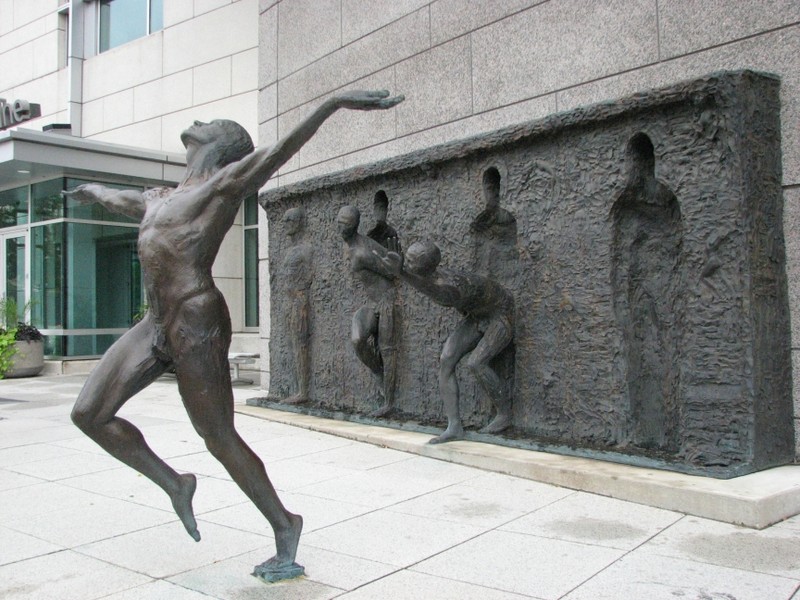
"Freedom," by Zenos Frudakis
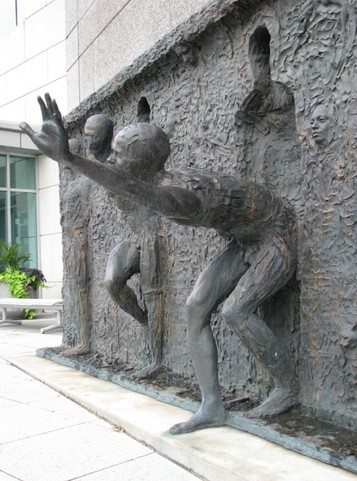
"Freedom," by Zenos Frudakis
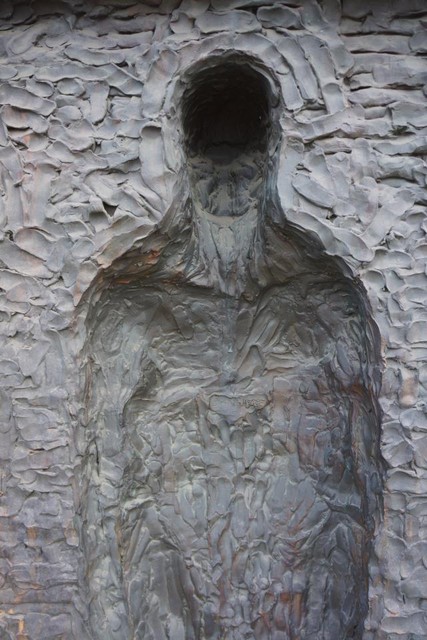
"Freedom," by Zenos Frudakis
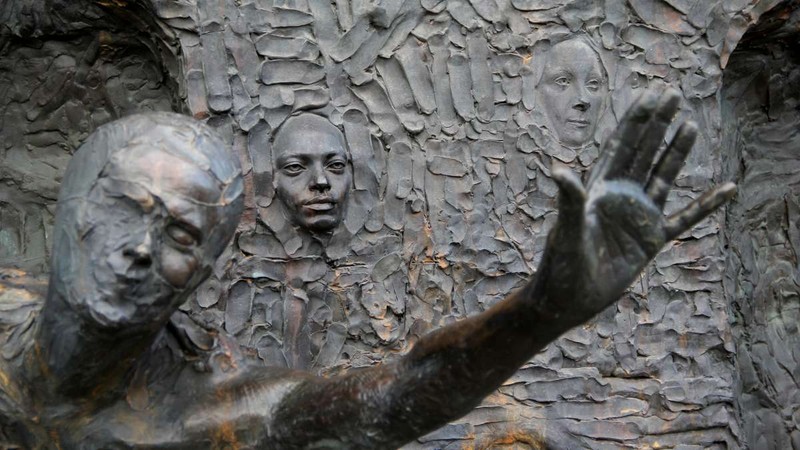
"Freedom," by Zenos Frudakis
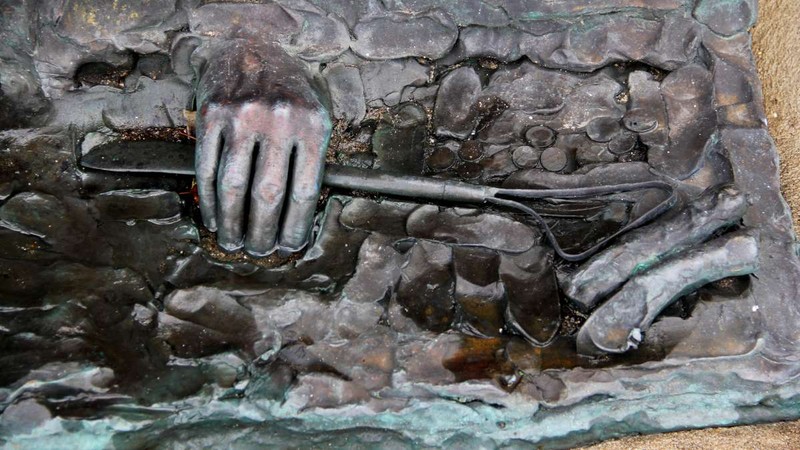
Backstory and Context
Text-to-speech Audio
Freedom, cast in bronze, is twenty-foot-long and eight-foot-high and weighs 7,000 pounds. Frudakis, who drew inspiration from Rodin's Gates of Hell when designing the sculpture, sought to incorporate several figures demonstrating the process of breaking free from various types of constraints. The face speaking the words "Freedom," from which the sculpture derives its name, is a mirrored reflection of the artist's face. Similarly, one can see a casting of Frudakis' hands within Freedom, produced by artist Duane Hanson.
Frudakis explained in an article with Sculpture Review in 2020 that a universal desire exists to break free, whether it be achieving freedom through the creative process, overcoming an internal struggle, or escaping a difficult circumstance. Thus, onlookers can relate to the statue based on their personal quests to achieve freedom.
Frudakis stated: "Although there are four figures represented, the work is one figure moving from left to right. The composition develops from left to right, beginning with a kind of mummy/death-like captive figure locked into its background. In the second frame, the figure, reminiscent of Michelangelo's Rebellious Slave, begins to stir and struggle to escape. The figure in the third frame has torn himself from the wall that held him captive and is stepping out, reaching for freedom. In the fourth frame, the figure is entirely free, victorious, arms outstretched, completely away from the wall and from the grave space he left behind. He evokes an escape from his own mortality."
Sources
"Freedom Sculpture," Zenos Frudakis — Public Monuments and Portrait Sculptures. zenosfrudakis.com. Accessed December 18, 2022. http://www.zenosfrudakis.com/freedom-sculpture/.
Frudakis, Zenos." Freedom Sculpture. zenosfrudakis.tumbler.com. Accessed December 18, 2022. https://zenosfrudakis.tumblr.com/freedom_sculpture.
Helm, E. Celebrating Freedom. Sculpture Review 69, no. 3 (2020): 33–36.
Yoo, Alice. "Sculpture Breaks Free." My Modern Met. October 4, 2011. https://mymodernmet.com/sculpture-breaks-free/.
http://www.zenosfrudakis.com/
http://www.zenosfrudakis.com/
http://www.zenosfrudakis.com/
http://www.zenosfrudakis.com/
http://www.zenosfrudakis.com/
